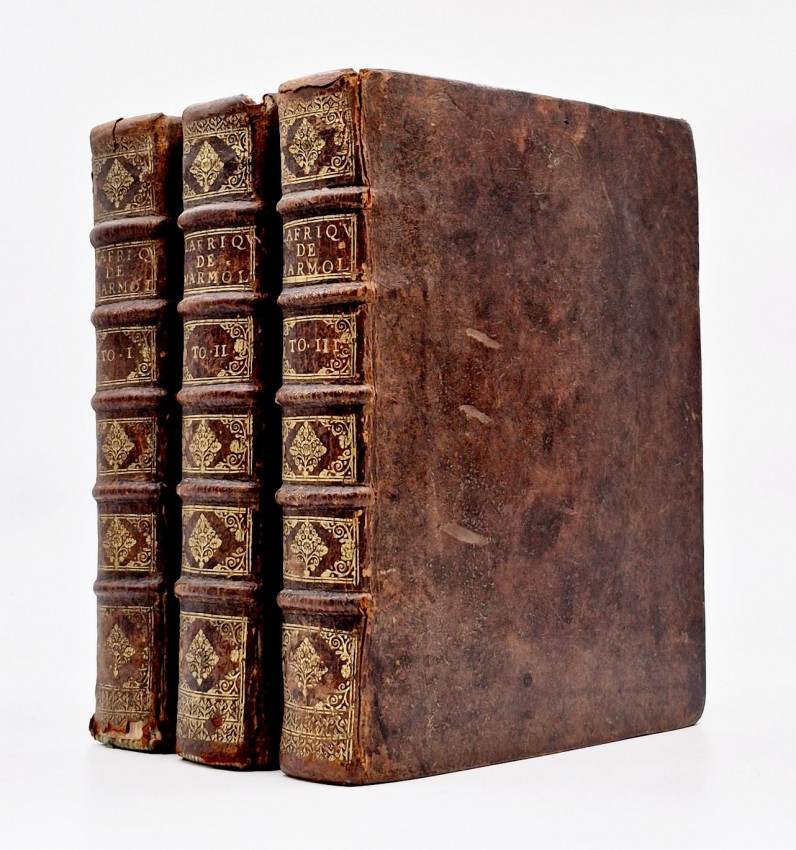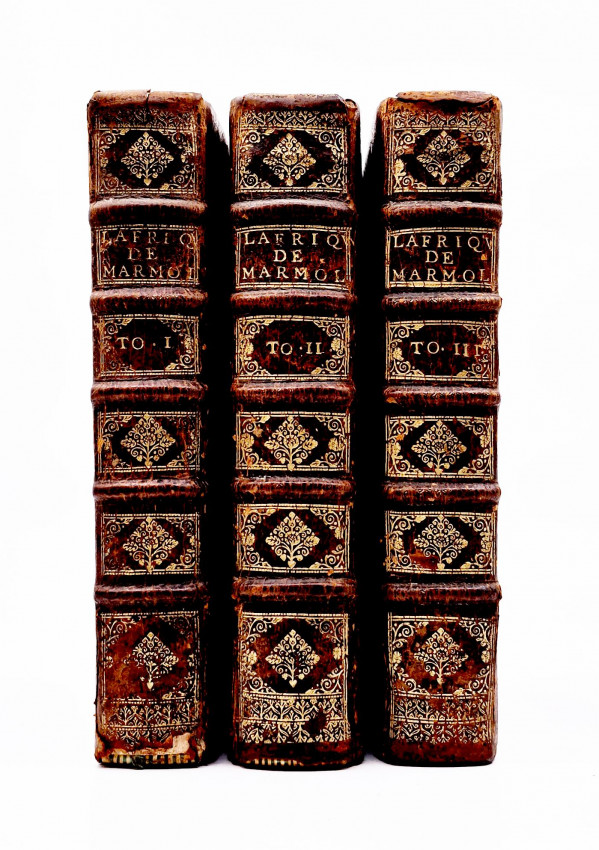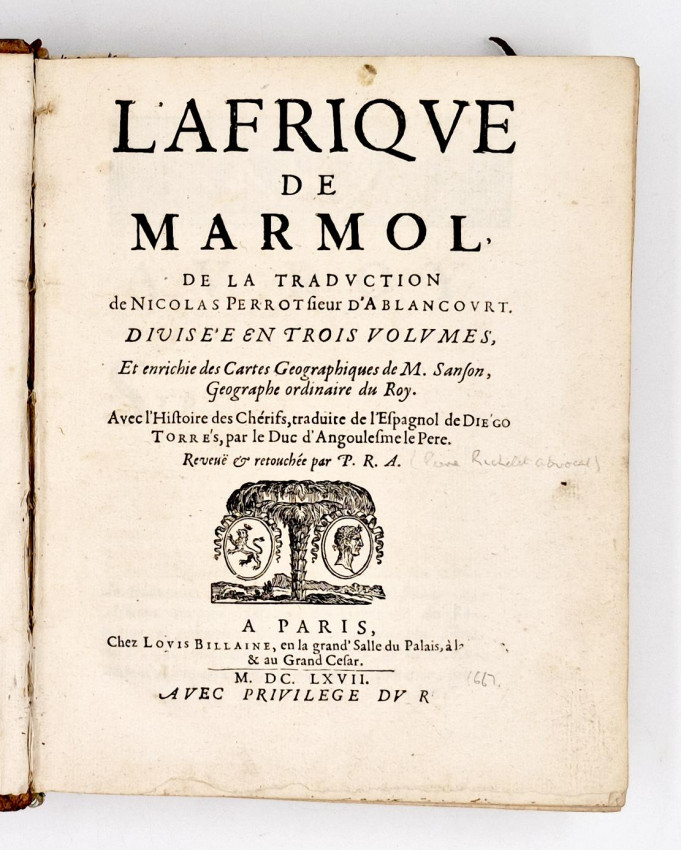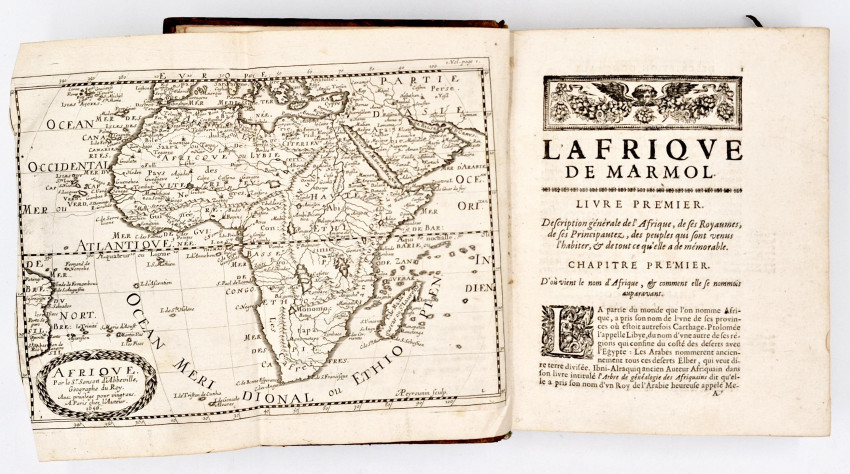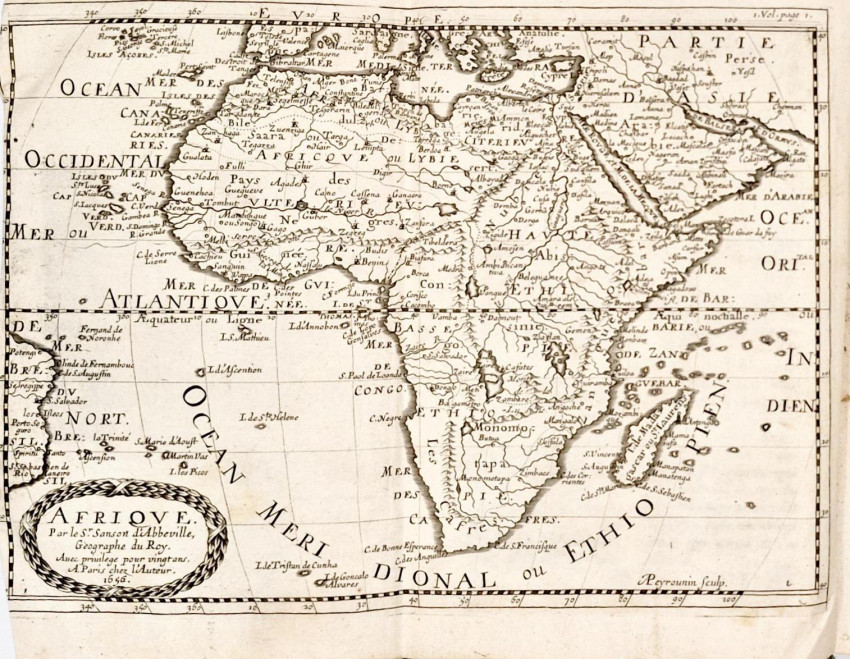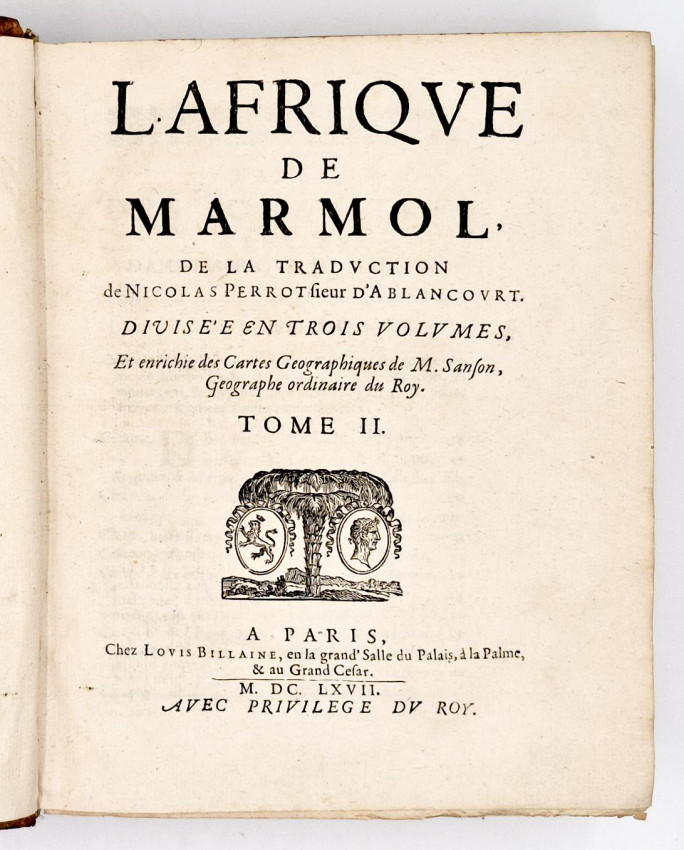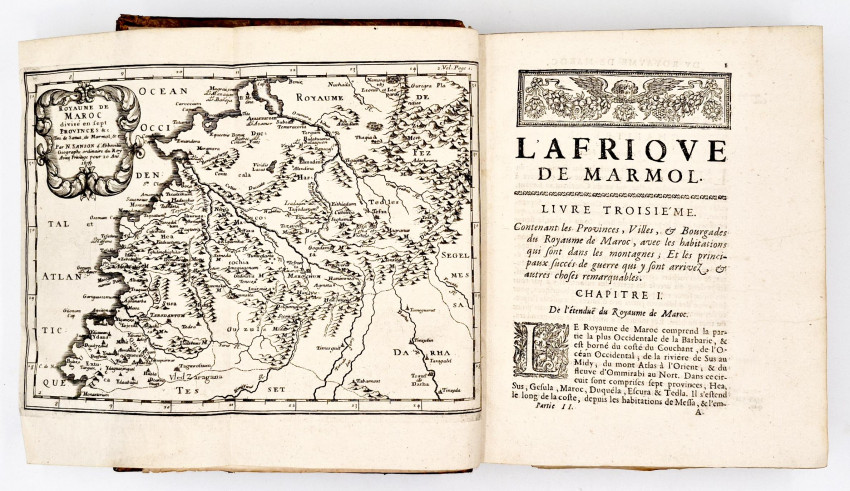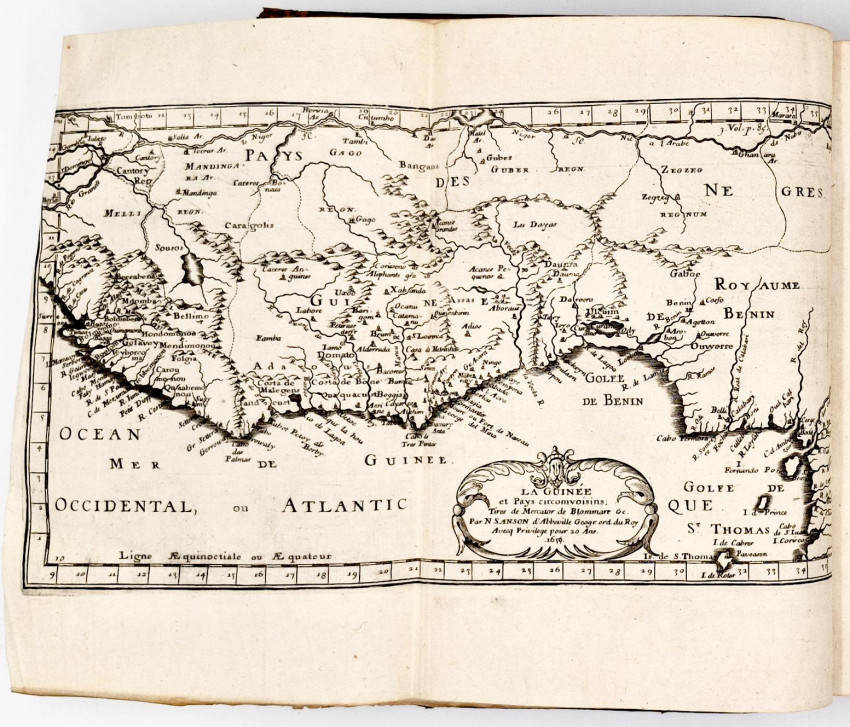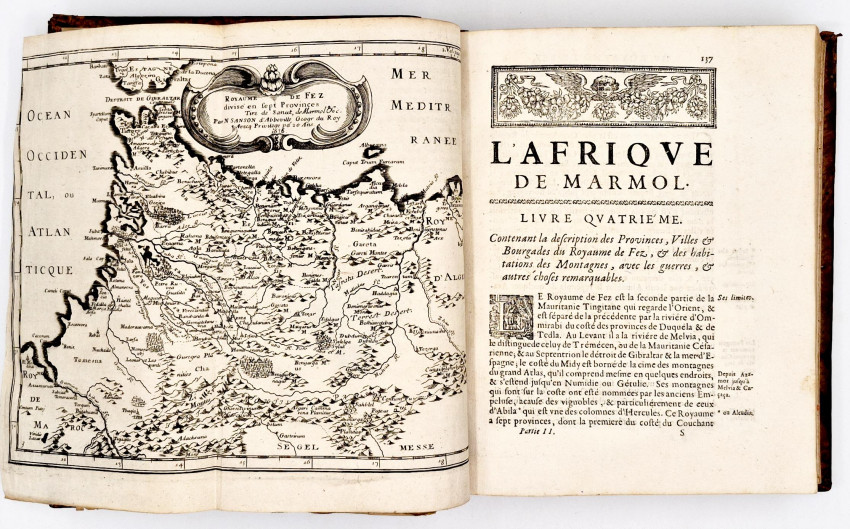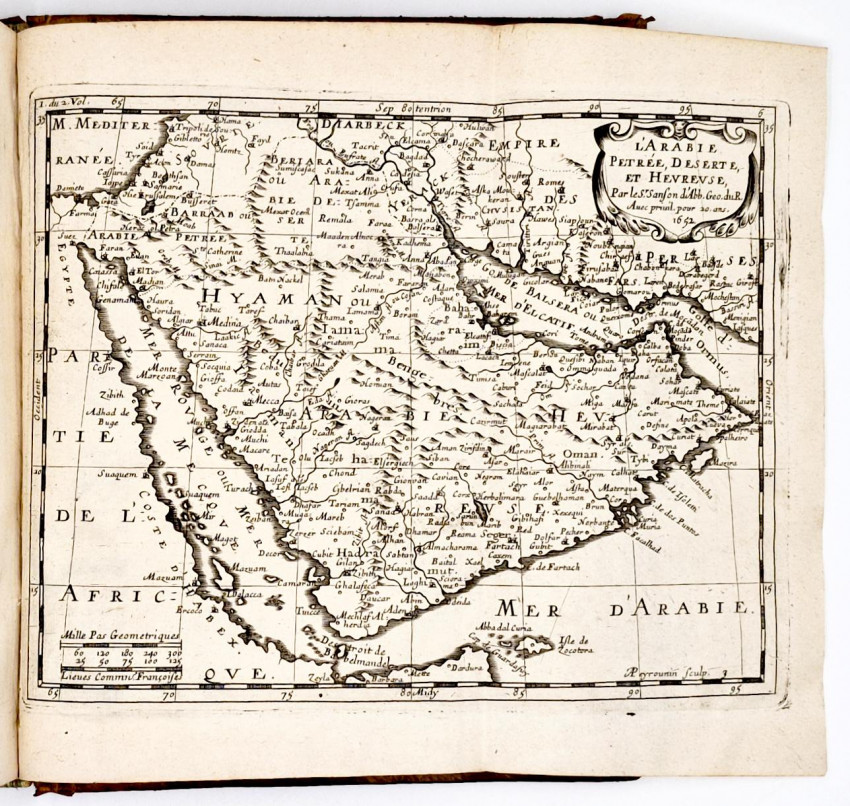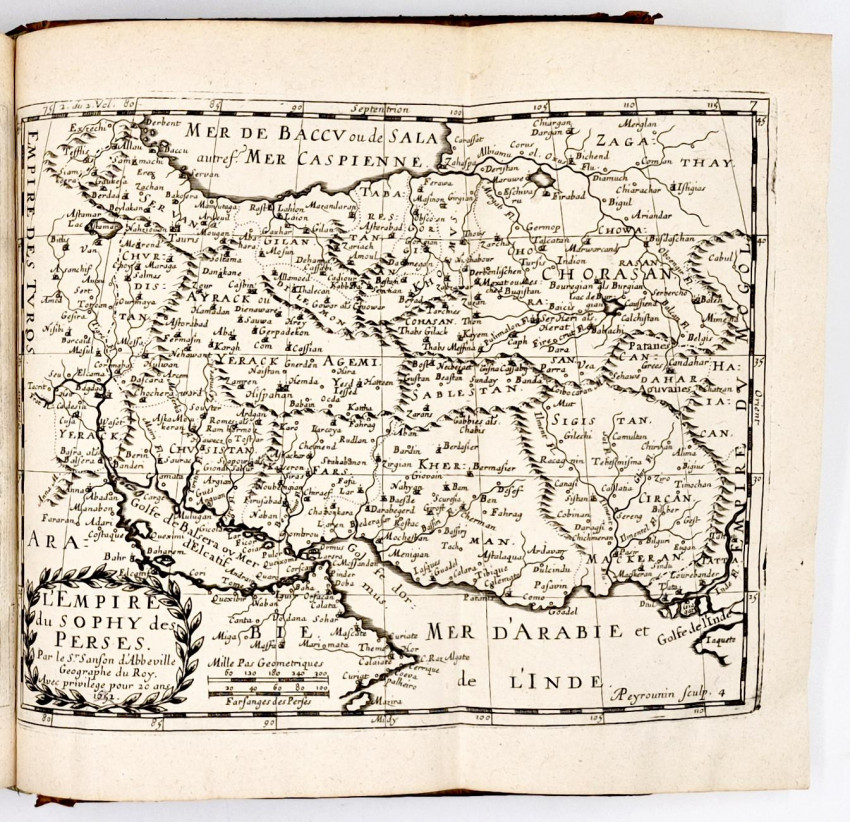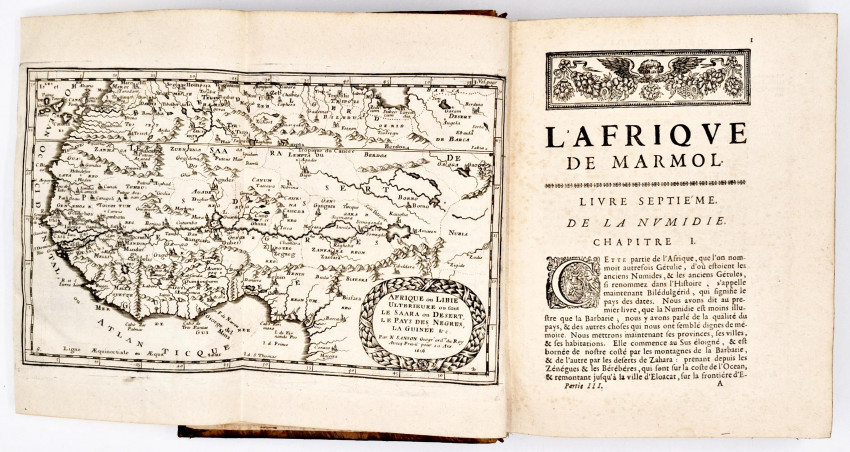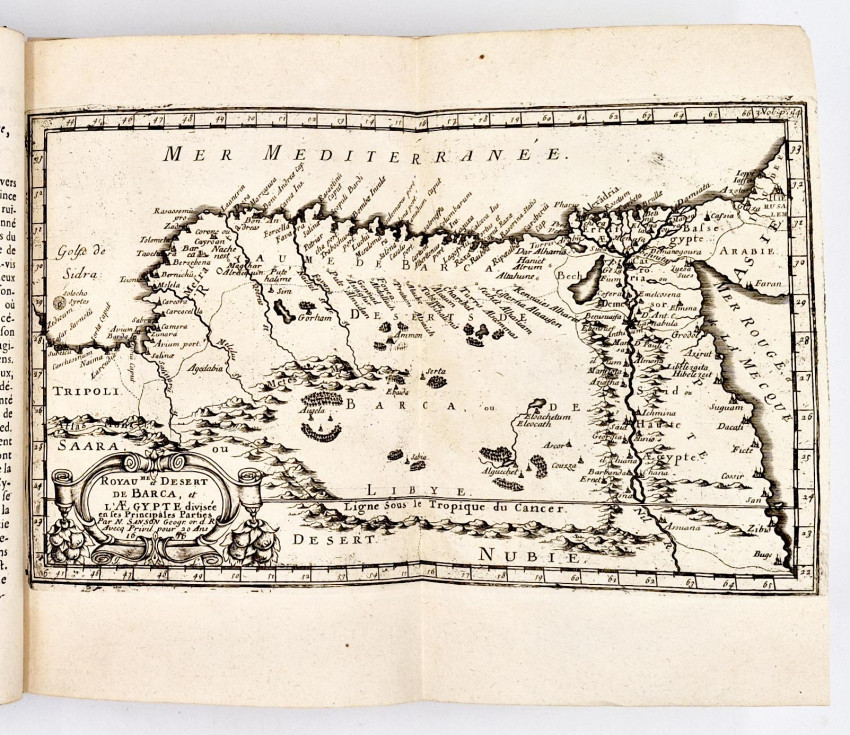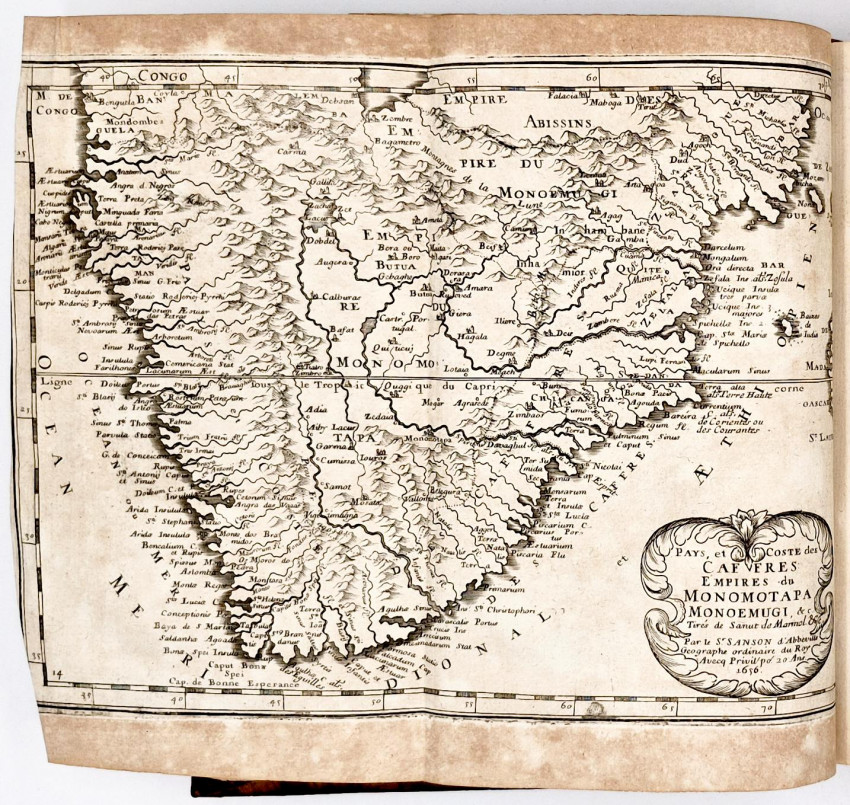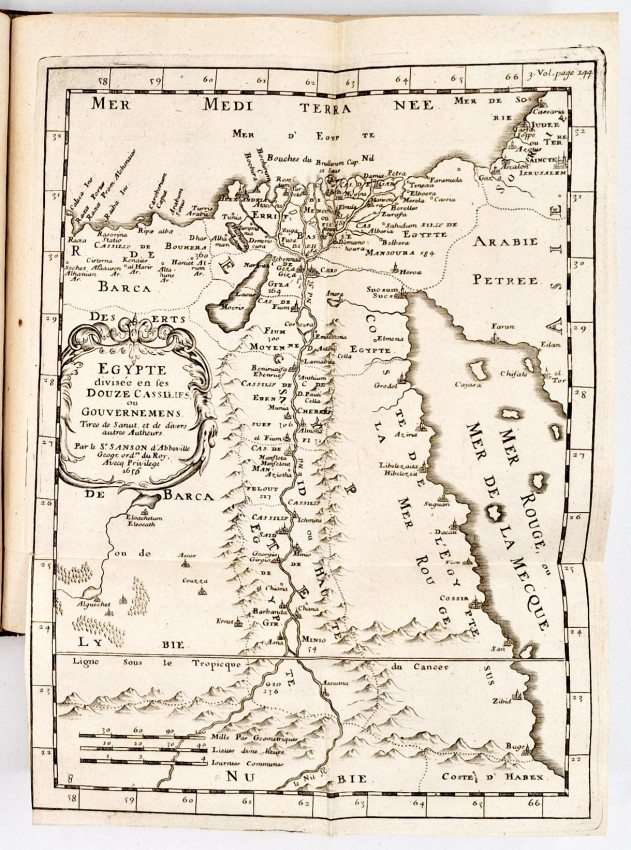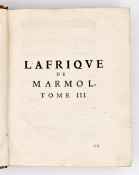Reveuë et retouchée par P.R.A. (Pierre Richelet, avocat).
First Edition in French: 4 parts in three volumes, volume I, (xxxii), 532, (xxxii), volume II, (xvi), 578, (l), volume III, (x), 304, (xxii), (ii blank) - (xiv), 226, (ix) pages, 28 folding maps by Sanson d'Abbeville, contemporary full leather with gilt titling and decoration in panels on the spines, the leather is worn eroded at the top and bottom of the spines and at the corners, red sprinkled page edges, bookplate on each front paste-down endpapers, contents and maps clean and free from foxing, a very good copy.
Royal Collection Trust (https://www.rct.uk/collection/1022546/lafrique-de-marmol-vol-2) ‘The Descripcion General de Africa is an important history of North Africa written by the Spanish historian Luis del Marmol Carvajal (1524-1600). Marmol was born in Granada shortly after its 1492 conquest by the Spanish and grew up in a cosmopolitan society that was greatly affected by the policies introduced by Spain following the conclusion of the 'Reconquista'. This upbringing was reflected in his later writings. At a young age, he joined the expedition sent by Charles V to conquer Tunisia and remained in North Africa for seven years. Following brief imprisonments across the region, Marmol travelled throughout North Africa and joined, as a member of a group of Christian servants, the sultan of Morocco, Muhammad ash-Shaykh (1491-1557), on one of his expeditions, during which time he picked up Arabic and Berber languages. In the 1550s, Marmol travelled to Sicily, where he came to be influenced by the description of Africa written by the Andalusian historian al-Hasan ibn Muhammad al-Wazzan (also known as Leo Africanus) which was a popular text among geographers and travellers in the sixteenth century. In the 1570s, Marmol began to publish his own history of the region in eleven books across three volumes; a twelfth book on the islands was proposed but never finished. The work was mainly inspired by Africanus’s description but also drew upon Marmol’s own experiences in Morocco as well as citing from classical and contemporary writers. This French translation by Nicolas Perrot d'Ablancourt was published in 1667.’
- Overall Condition: A very good copy
- Size: 4to (245 x 190 mm)
- Sold By: Clarke's Africana & Rare Books
- Contact Person: Paul Mills
- Country: South Africa
- Email: [email protected]
- Telephone: 021 794 0600
- Preferred Payment Methods: Visa & Mastercard via PayGate secure links and Bank transfers.
- Trade Associations: ABA - ILAB, SABDA


